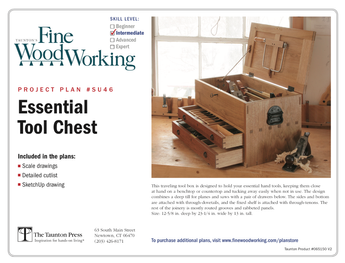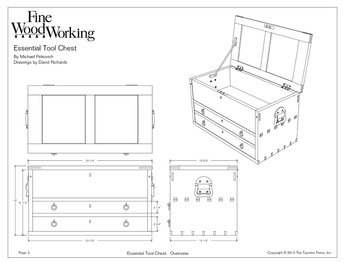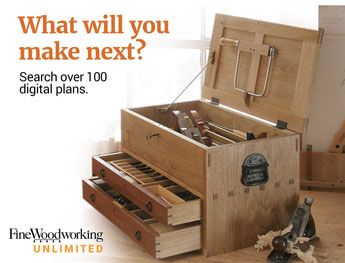Thinking of turning back to do a bit of turning
So, I pretty well set turning aside maybe 8 years ago. Bluntly (no pun intended,) I struggled sharpening tools that were some other shape than flat (think gouges.) A little less of a struggle on angled tools (skews). I’ve a slow speed grinder, all the (then good) bells and whistles to make sharpening easy, but….
I’ve a couple of projects in mind that would pull me back into turning. I see now there are tools such as the Easy Wood chisels. Sound like a great idea. I’ve a couple of questions:
1. are these, from a practical standpoint, scraping only tools?
2. I’m finding other manufacturers other than Easy Tools. Thoughts, comments, ideas, concerns … all appreciated.
3. Perhaps I’m mixing all this up and the easy wood type tools are just not good a common turning?
I don’t see me turning to the lathe maybe more than a few times each year, but then again, I’m not getting any younger and furniture work is starting to get heavy and cumbersome at times.
Thanks!















Replies
So we were young, early 70s, group of us, woodworkers, a potter ,some artists and one guy who was a wood turner. He had a couple of lathes + one monstrously huge lathe. He could afford that because he wasn't trying to accumulate 40,000 tools like I was. He got really good at it- enough to get accepted at all the shows ,collected and by museums as well ,including the Smithsonian. Some really astonishingly beautiful stuff. I've been doing this all my life and made a living at it but I ve been all over the map and still working on what I'll do when I grow up! I sometimes think it was genius on his part...one thing..specialize! He was destined to be someone all the woodworks would know about-- except for one cog in the wheel, he died young!
OK...you've got to tell us - who was the famous woodturner?
Personally, I wouldn't want to do pretty much the same thing all the time. I've done all sorts of woodworking, over 100 pieces, but not necessarily for profit, although it did pay for all the tools in my shop, including antiques that I collect and never use. I took up woodcarving a few years ago, and some of the guys only seem to carve one basic thing, and post messages such as "I just carved my 100th Santa caricature". Not for me, but if it makes them happy...
What type of turning are you looking to do? Spindle turning or bowls?
Easy Wood Tools are scrapers. They are easy to use, but the finish is sub-optimal. There are a bunch of other manufacturers of these carbide tools (which don't need to be sharpened, just replaced). Add a pile of sand paper and you can get some good spindles.
If you really want to turn spindles (my area, for the Windsor chairs I work on), you need shaving tools, but not a lot of them. 3/4" Roughing gouge and a nice and sharp skew chisel. If you can use those two, you can turn beautiful spindles - with lots of practice and sharp edges.
Roughing gouges are not to hard to use if you follow a few easy to learn rules.
Skew chisel is a different story. Amazing tool, but so much skill needed. I'm still working on obtaining the fine motor moves necessary.
Carbide-tipped tools have their place. Yes, they're scrapers. But they're great for making finishing cuts, for undercutting the inside of a bowl, and for cutting into end grain. They are also easier to use than conventional gouges or skews—just keep the tool level and you'll be fine. There are several brands out there (and I have a sneaking suspicion that all source the cutters from the same place). Easy Wood Tools tend to be overpriced, in my view. I'd look first at the tools from Woodpeckers; the pointed end of its spear-shaped detailer is more versatile than the blunt ends of other brands of detailer.
I'm a turning lightweight, but when I do it, I want results. I don't think it's cheating to avoid sharpening.
If the goal is to turn out finished projects, carbide tools are faster. If the goal is to master the intimate skills of traditional tools, OK if that's what you want.
For question #1, yes but who cares? They do the job. If I was starting over, I would start with carbide tools because the learning curve is short. As it is, I do the majority of work (after roughing gouge) with carbide tools, and finish with regular tools to get that smoother surface. Its not one or the other.
And I would get the brand for which it is easiest for you to get replacement cutters.
The only advantage of carbide is not having to sharpen. It has a number of disadvantages, expense is the most obvious, of both the initial tool and the replacement cutters. It also will not take as fine an edge as high speed steel.
You can buy high speed steel scrapers for much less than the cost of the Easy tools. They will cut better, are available in more shapes, and you can also grind or modify them into any shape you wish, as the need arises.
You can also grind some to a negative rake for fine finishing cuts which is not possible with carbide. ( Easy sells a negative rake cutter, but it is not effective as it will not take a burr).
As far as grinding or sharpening your scrapers, this is very simple and takes less skill than using them, as the tool stays flat on the rest for the operation.
Thanks. My needs will mostly be spindle turning, but hollows aren’t off the table. I think I’ve got my answer. I guess I’ll dig out my old wolverine vari guide and invest the time trying to (re?)learn sharpening. Plane irons and chisels, no problem. I’ve a handful of older gouges n skews that I probably can’t hurt by practicing on n can save my nicer tooling once I figure it out. I can sharpen scrapers well enough. I’ll just pass on the carbide tooling.
Again, I appreciate all the help. Have a good evening.
I started getting back to the lathe about a year and a half ago and have both the Easy and traditional tools. I find the Easy are really good when turning epoxy especially using the negative rake carbide edges.
But for wood, I really enjoy the traditional tools. The surface requires far less sanding. It does take a TON of practice but i find it very rewarding when I turn a bead with a skew that is exactly what i want. Yes, I still goof and the skew catches. Oops!! But it's part of learning. Same with the bowl and spindle gauges. I'm still learning those too. To assist, there are a lot of very good instructional videos on youtube.
Also, if you go traditional, get a sharpening jig. I got one from Peachtree that's available on Amazon. It makes sharpening gauges a piece of cake. For skews, i use Rob Cosmans recommendation and use my 12 inch disk sander. https://youtu.be/mttxQ66ylbo?si=0rRhdo4HBJTdRy-b
RE practice:
1. pick one tool to master at a time. A sharp 3/4" roughing gouge is a perfect one to start with.
2. pick a good turning wood: cherry, poplar, maple.
3. keep that approach angle correct, usually the bottom of the handle touching your belt. Gentle pushing into the wood at that angle. Most mistakes I see are from bad approach angles.
4. move from the hips and feet. Arms stay relatively stationary (with the gouges, not so with the skew).
5. cut down hill.
6. lots of videos out there. Above one looks good on the skew but don't start there.
There no cheating in hobbies. You're likely gonna be doing a lot of sanding anyways so go for the carbides if you don't feel comfortable sharpening. Gouges cut a lot cleaner yes, but if you aren't against the clock does it matter? Hell I fancy myself a pretty good turner, I make a decent amount of my income off it. When I have a lot of unadorned spindles to do sometimes I'll rough it round, use a block plane with it on a lowish speed between centers still to level it out, 80grit, 120grit, move on the the next.
I'm decent with a skew but sometimes its a little too fun and its easy to get carried away. So there is that too, find out what you find fun and make it enjoyable. If its not perfecting polished off the tool beads then you might be able to skip the gouges for now. If you get into turning there's next to zero chance you won't end up with some.
I agree with above, you can do ALOT with a 3/4" roughing gouge.
When sharpening with a grinder, a sharpie marker is your best friend. Color the bevel and adjust the rest until you're right on target.
I started wood turning this past summer. I found a local school that teaches woodturning. I found it very helpful to learn the techniques at a school. The roughing gouge was quick to learn. The spindle gouge gave me all kinds of headaches. Then, about 40 to 50 hours of class instruction, during a bowl turning class, I suddenly understood what riding the bevel of the tool really meant and how to do it. As such, both bowl turning and spindle turning became easier. Still a lot of practice to go. As such, if you can find a local school and take some classes, the traditional high speed steel tools can be learned in a short amount of time. I was tempted to go for carbide tools but now happy enough with high speed steel. Nothing wrong with carbide tools; I may still end up getting some.
In nearly 50 years of “wood butchering” there are only 2 constants, good wood and sharp tools. You can’t produce the items that feature in the FW readers gallery from a couple of pallets from the skip bin of Woollies, or turn Sheraton legs with crisp details using abrasives.
I struggled for years cutting dovetails, then one day I got hold of a board of Huon Pine, Mr Wajda eat your heart out.
With all due respect to your years in the craft, please don’t reduce skill to a material necessity. I think many who have been published in the fww gallery could produce astounding work from some pallets.
I agree with the above comment, using valuable Huon pine is certainly not required to cut fine dovetails, as evidenced by all of the dovetails ever shown in FWW.
Carving is my latest target in the great range of woodworking skills. Chris Pye is my chosen expert (at both the carving and the teaching of it). He has some fundamentals. One is that "the tool is the work" meaning not that the user doesn't need skill but that the nature and quality of the tool will improve not just the quality of the work but the skill of the user. A poor tool, badly "commissioned" will work against skill acquisition, even if it doesn't completely prevent it.
One fundamental of any edge tool is to make it "shaped, sharp and stropped". In other words, the processes we generally lump together as "sharpening" is a necessary skill (with associated understanding) in all woodworking involving edge tools.
So .... why not accept that to turn you need tools fit for purpose and the ability & knowledge to keep them that way. Learn shaping ,sharpening and stropping - of turning tools in this case.
After years of trying various things, I now use a Sorby ProEdge belt grinder to shape and sharpen, a guide to do any hand sharpening (touch ups, really) and 3M fine grit papers on float glass to make ultrasharp. Leather & MDF strops charged with diamond paste 6 - 1 micron can make any edges needing it (and they don't, all) very sharp indeed.
Once you master sharpening (of anything) all other woodworking becomes easier, better quality and more satisfying in a jump. You still need a vast range of other WW skills but sharpening skill amplifies them all and hastens their acquisition
My thanks to all for your responses!